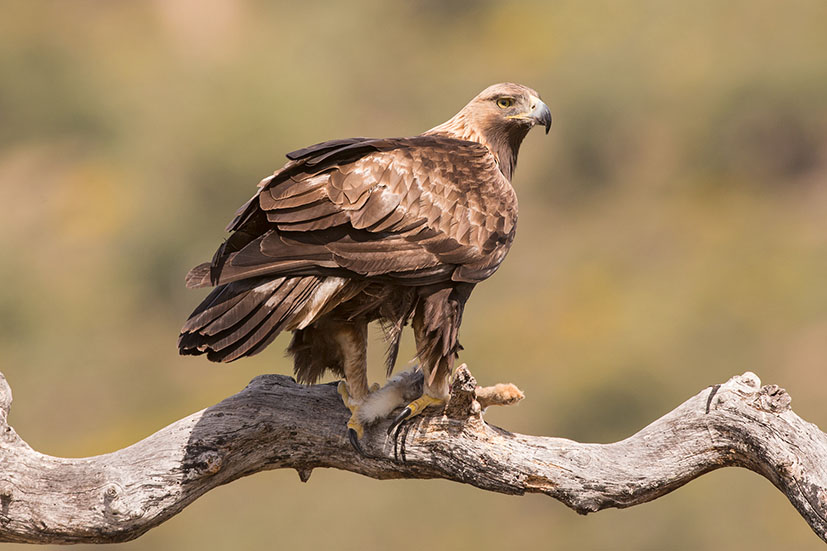Migratory birds, big-game, and other wildlife will benefit from increased connectivity on federally managed lands.
The Bureau of Land Management (BLM) released a policy today focused on maintaining, conserving, and restoring habitat connectivity for wildlife within the 245 million acres of public land managed by the federal agency. The new guidance (IM 2023-005) reflects a critical step towards stabilizing species’ decline across the North American hemisphere, where nearly 3 billion birds have been lost in the last 50 years.
“This policy will help conserve connectivity, restore habitat, and stabilize populations of wildlife that need intact public land to thrive,” said Sara Brodnax, policy director for public lands, National Audubon Society. “We look forward to working with the agency to ensure that our nation’s most vulnerable migratory species, including birds, can continue to count on our public lands for rest, sustenance, and shelter.”

Golden Eagle, copyright Ron Marshall, from the surfbirds galleries
The BLM’s emphasis on habitat connectivity builds upon decades of work by local communities, state governments, Tribes, and other partners to ensure a sustainable future for wildlife migration. Prior efforts include Department of the Interior’s 2017 Secretarial Order 3362 and BLM Instruction Memorandum 2018-062, which promoted collaboration with western states and furthered the understanding of species’ movement across connected landscapes. The BLM’s new guidance will continue this important work and ensure habitat connectivity is considered in future planning processes.
In recent years, migration corridors and connected landscapes have gained widespread support through research, funding, and collaborative conservation. In the western United States, efforts have focused on important big-game species, like Elk, Mule Deer, and Pronghorn Antelope, especially in light of increased human conflict, development, and climate change.
However, many fish and wildlife species depend on intact, connected habitat. Migratory birds make a long and perilous journey across North America every year. Along the way, these birds depend on critical breeding, stopover, and wintering sites for their survival. New science and data, like those developed by Audubon’s Migratory Bird Initiative, are now clearly showing where and when migratory birds travel – and much of the habitat needed for avian migration is found on public lands like those managed by the BLM.
“Birds depend on connected landscapes and habitats as they migrate across the hemisphere,” said Brodnax. “These areas of importance are essential to their survival. Audubon migration science, such as the recently launched Bird Migration Explorer, could inform and strengthen connectivity efforts across BLM lands.”